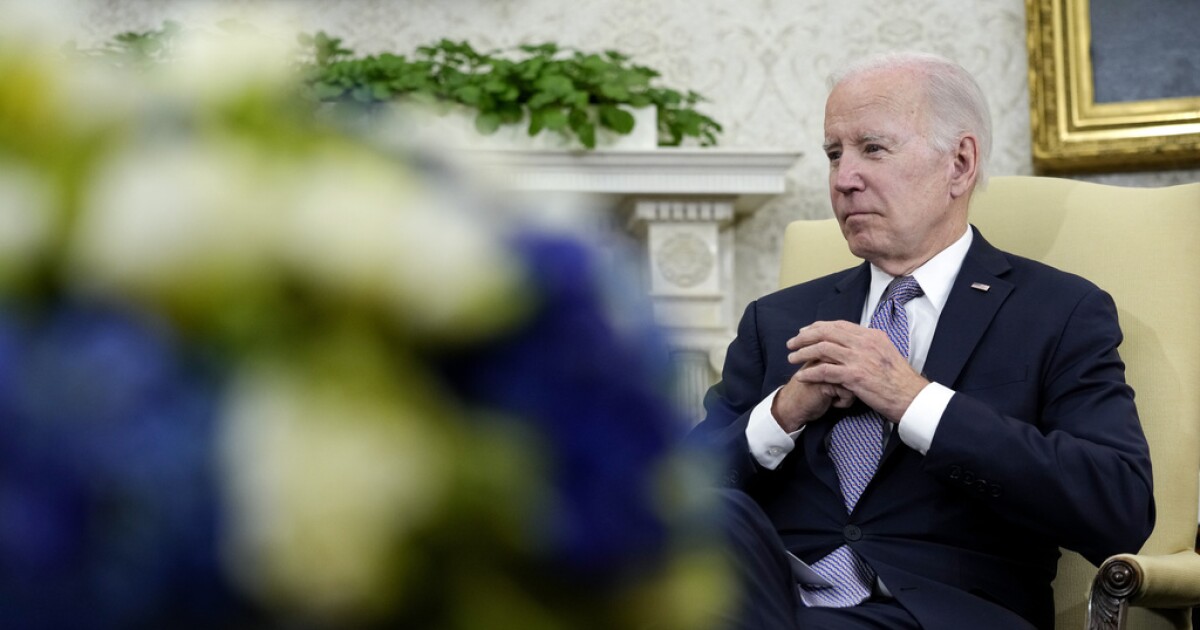

President Joe Biden
is approaching summer with fewer options to address gas prices, due in large part to a depleted emergency reserve stockpile and an OPEC+ that seems more willing to ignore his wishes, which could put the White House in a bind ahead of driving season.
Gas prices soared to a national average of $5.02 per gallon last summer, a record-high underpinned in large part by a sharp increase in global oil prices due both to higher demand as COVID-19 restrictions eased and supply insecurity following Russia’s invasion of Ukraine.
BIDEN’S LATEST IMMIGRATION MOVE UNDERMINES THE RULE OF LAW
Subsequent actions, including Biden’s decision to sell off 180 million barrels of oil from the U.S. Strategic Petroleum Reserve, or SPR, helped lower prices — or at least responded to public frustration with costs. By August, prices abated to a national average of $3.90 per gallon.
Though it’s unlikely that the country will see that same type of spike in gas prices this summer, consumers still could still see slightly higher prices—particularly in the second half of the summer due to the start of hurricane season.
“Consumers confronted by inflated prices for basic necessities will now have to spread their budgets even more thinly,” International Energy Agency (IEA) said in its most recent monthly oil outlook. “This augurs badly for the economic recovery and growth.”
In its most recent U.S. Short-Term Energy Outlook, the EIA
predicted
that national gas prices will average somewhere around $3.50 per gallon this summer, or 80 cents per gallon lower than the average cost of gas last summer (between April and September).
That estimate is primarily due to lower forecasts for crude oil, the primary ingredient in gasoline. Crude prices account for more than half of final retail gasoline prices in the U.S., according to the EIA, and 57% in 2022.
The EIA noted that Brent crude is expected to average around $87 per barrel over the summer, compared to the previous year, when crude was averaging around $107 per barrel.
But many unknowns still loom large on the horizon, and events such as an early or stronger-than-usual hurricane season could easily change things.
And Biden has fewer tools at his disposal now than last year.
SPR limitations
The nation’s emergency petroleum stockpile currently sits at roughly 366 million barrels, its lowest point since the 1980s, after Biden authorized the emergency drawdown of 180 million barrels of oil last March to lower gas prices ahead of the November 2022 midterm elections.
In the event of a hurricane or other threat to global oil supply, Biden could theoretically use emergency powers to order additional drawdowns from the reserve, though this would likely be fraught with political risk.
Unlike last year, Democrats no longer control both chambers of Congress—and under Republican leadership, the House passed legislation in January aimed at protecting the SPR from further drawing down SPR supplies for non-emergency purposes until it submits a plan to increase the percentage of federal lands available for oil and gas production.
Last year’s drawdowns also raised questions about the structural integrity of the reserves, which can be stressed by repeated petroleum withdrawals, and require possible corrective maintenance or even closure of the facilities, Tristan Abbey, a former National Security Council and senior Senate Energy and Natural Resources Committee staffer who oversaw the Strategic Petroleum Reserve, said in an interview.
EPA WAIVES RESTRICTIONS ON HIGHER-ETHANOL GASOLINE FOR SECOND STRAIGHT SUMMER
“As somebody who has worked on the SPR as a policy issue for several years in different roles in Washington, I continue to have grave concerns that the structural integrity of the reserve has deteriorated to some extent as a result of the historic drawdowns under the Biden administration and the sales mandated by Congress,” Abbey said.
“We should not take assurances that everything is OK at face value,” he added.
Rising OPEC+ indifference
The world’s largest oil-producing nations are also showing they are more willing than ever to buck Biden’s wishes and slash production, even when he deliberately pushes for the opposite.
Saudi Arabia and other members of the oil cartel backed a surprise production cut in October of last year, reneging on an apparent promise secured with the Biden administration over the summer on production. The administration made clear it saw the cuts as a betrayal and said it would “reevaluate” U.S.-Saudi ties in the weeks and months to come.
White House press secretary Karine Jean-Pierre told reporters at the time: “It’s clear that OPEC+ is aligning with Russia” in cutting production, and some Democrats, including Senate Foreign Relations Committee Chairman Bob Menendez (D-N.J), called at the time for the administration to “immediately freeze” all aspects of U.S.-Saudi relations.
But the Biden administration never acted on that promise. And OPEC+ ordered additional supply cuts earlier this March at around 1.16 million barrels per day, a surprise move that oil futures for the international benchmark, Brent Crude, and West Texas Intermediate (WTI) to see their sharpest rise in nearly one year.
“There is some truth to the saying that gas prices rise like a rocket and fall like a feather,” Andrew Gross, the spokesman for AAA, said in an interview, noting that gas prices are still reflecting some of the dwindling effects from the March OPEC+ announcement.
Ethanol waiver extended
One move the Biden administration does have in its back pocket is to waive restrictions on higher-ethanol gasoline, which it did Friday for the second straight year in a row.
The emergency waiver, ordered by the EPA, is designed to help expand the sale of ethanol-blended gasoline, or the E15 blend, and lower retail fuel prices during the summer driving season.
EPA said Friday that the waiver would help to protect drivers from fuel supply crises by reducing the nation’s reliance on imported fossil fuels and would improve U.S. energy independence, as well as support American agriculture and manufacturing.
CLICK HERE TO READ MORE FROM THE WASHINGTON EXAMINER
“Allowing E15 sales during the summer driving season will not only help increase fuel supply, but support American farmers, strengthen U.S. energy security, and provide relief to drivers across the country,” EPA Administrator Michael Regan said in a statement.
The agency estimated E15 is about 25 cents a gallon cheaper than E10, the most common blend of gasoline on the market, although the vast majority of the nation’s retail stations do not carry the fuel.





